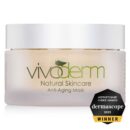Rosacea Basics
Rosacea is a long lasting, non-scarring skin condition of the face that is often misdiagnosed as adult acne. It varies in severity and does not always worsen with time. Typically, you will experience inappropriate flushing that is not usually associated with sweating and/or persistent facial redness. It is common to have broken blood vessels (telangiectasias) on your cheeks. You may also experience bouts of inflammation that cause red papules (small bumps) or pustules. However, comedones (blackheads and whiteheads) are not part of rosacea.
About 50% of those with rosacea suffer eye involvement, including such conditions as conjunctivitis, blepharitis, dry gritty eyes, and recurrent sties. Nose enlargement (rhinophyma) is uncommon but mostly seen in men. It is only very rarely seen in women.
Key Features:
- Facial symptoms – burning and stinging
- Facial flushing, blushing evolving to persistant redness
- Inflammatory papules, pustules (pimples)
- Cheeks are not warm
- Telangectasiae, (blood vessel lines)
- Eye involvement
- Soft tissue hypertrophy or skin thickening (rhinophyma)
 |
 |
 |
| Facial flushing | Telangectasias | Rhinophyma |
Who Gets Rosacea?
This condition is most commonly seen in those who have fair skin and is sometimes referred to as the “Curse of the Celts” or a “Peaches and Cream“ complexion.
Where Does Rosacea Occur On The Skin?
You will usually see rosacea around the central area of your face. It may occasionally be isolated to one patch.
When Does It Usually Start?
Onset usually occurs between 20-40 years of age.
How Does Rosacea Affect Us?
- Rosacea can be very embarrassing, flushing can be a source of social discomfort
- Many may feel that they are perceived as heavy drinkers
- Eyes can be gritty and uncomfortable
- Older men are frequently ashamed if their nose becomes bigger and knobbly






